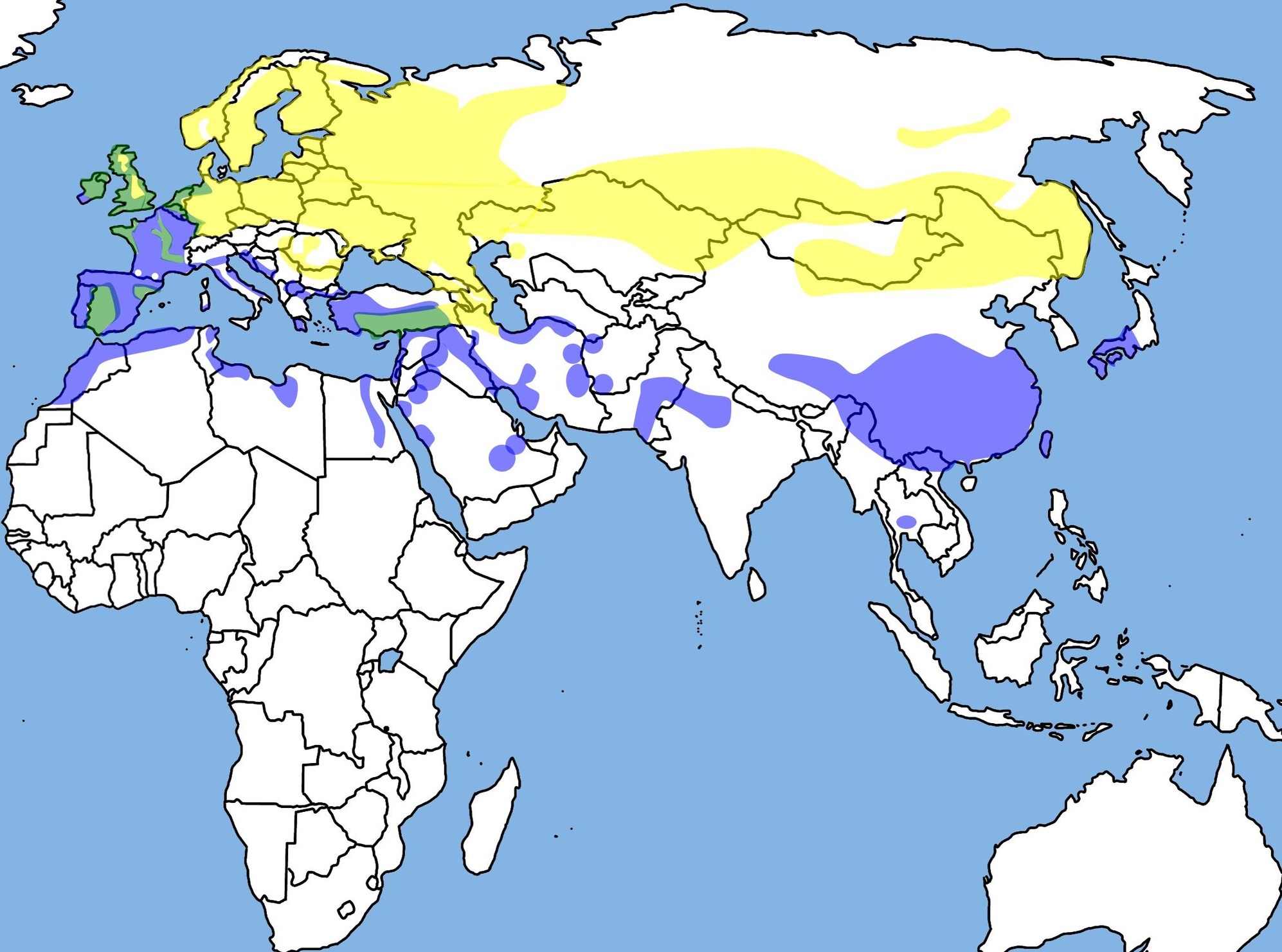LAPWING (Vanellus vanellus) - Vaneau huppé
Summary
Found only in lowland marshy areas, in Switzerland it is mainly a passage migrant but with some few pairs breeding in areas under protection. It has a dramatic display flight with a characteristic call:
The Lapwing is found all across the Western Palearctic from Iceland to the Pacific coast of Russia. It is one species that is sensitive to climate change which is thought to explain a northwards expansion of its range in this region, also long-term records from the Netherlands show that the first eggs (which once were harvested for food) are being found earlier and earlier. Although a year-round resident in a few areas (green in the map below) it is mainly migratory moving along a rough north-east / south-west axis to avoid the frozen northern winters.
Lapwing distribution: yellow breeding range; purple wintering range; green year-long resident.
© Arlette Berlie
In Switzerland it is mainly a passage migrant with most birds seen during the northwards passage in February-March, with fewer in October-November. A few pairs do breed in Switzerland but the numbers doing so have declined markedly over the last 40 years. This is undoubtedly due to habitat loss because this is a species of the flat lowlands, preferring moist ground with open or sparse vegetation and marshy areas. Such habitat in Switzerland is generally claimed for agriculture, drained and intensively managed, and since (like all plovers) this is a ground-nesting species its breeding activities are physically disturbed. However they do hang on in areas which have been given some degree of protection from such disturbance.
It is very elegant looking, with its rounded body, fine crest and glossy green plumage, and its true magnificence is easily overlooked at a distance where it can seem like just another black and white bird. Their sound and displays are just great if you get the chance to watch and listen.
© Arlette Berlie
The basic display call is a three-part song based around somewhat snarling high-pitched "whoo-eep cheep-cheep, whoo-eep" sounds which seem to swirl and reel around, here is the basic theme repeated three times:
If you take a look at the sonogram you can see how the notes slide up and down the scale:
Lapwing display flight © Frank Jarvis
However you seldom actually hear one quite that clearly because these are active creatures and spend a lot of time displaying over their territories, with many chases and display flights taking place all the time. These flights are pretty spectacular in their craziness, the bird has very broad wings and it swoops and soars, twists and turns in a dramatic fashion, often with two birds working it together. The result is a crazy confusion of wings and sounds. Here is a pair displaying in a reserve in the marshes of the Norfolk Coast in UK, with other shorebirds and terns in the background along with the sea roaring on a pebble beach - a lovely wild scene:
During these displays one bird will occasionally suddenly accelerate and beat its wings extra hard, at this point the wings emit a strange vibrating noise, here is one not far from a busy road where I left my recorder in its display area, if you listen carefully you can hear the humming noise from the wings at 4,10,20 and 30 seconds (best, as always, with headphones):
It is from this noise and display that the name "Lapwing" derives.
It also goes under the names Northern Lapwing, Green Plover, and also Peewit - this latter name coming from the calls. This sound is not so obvious (to me at least !) from the flight calls, but here is one in a small reserve in Switzerland which was calling from the ground, the Marsh Frogs were also calling! But at least you get the impression of the type of habitat they prefer (you just have to ignore the inevitable light aircraft overhead).
Lapwing studies © Frank Jarvis








